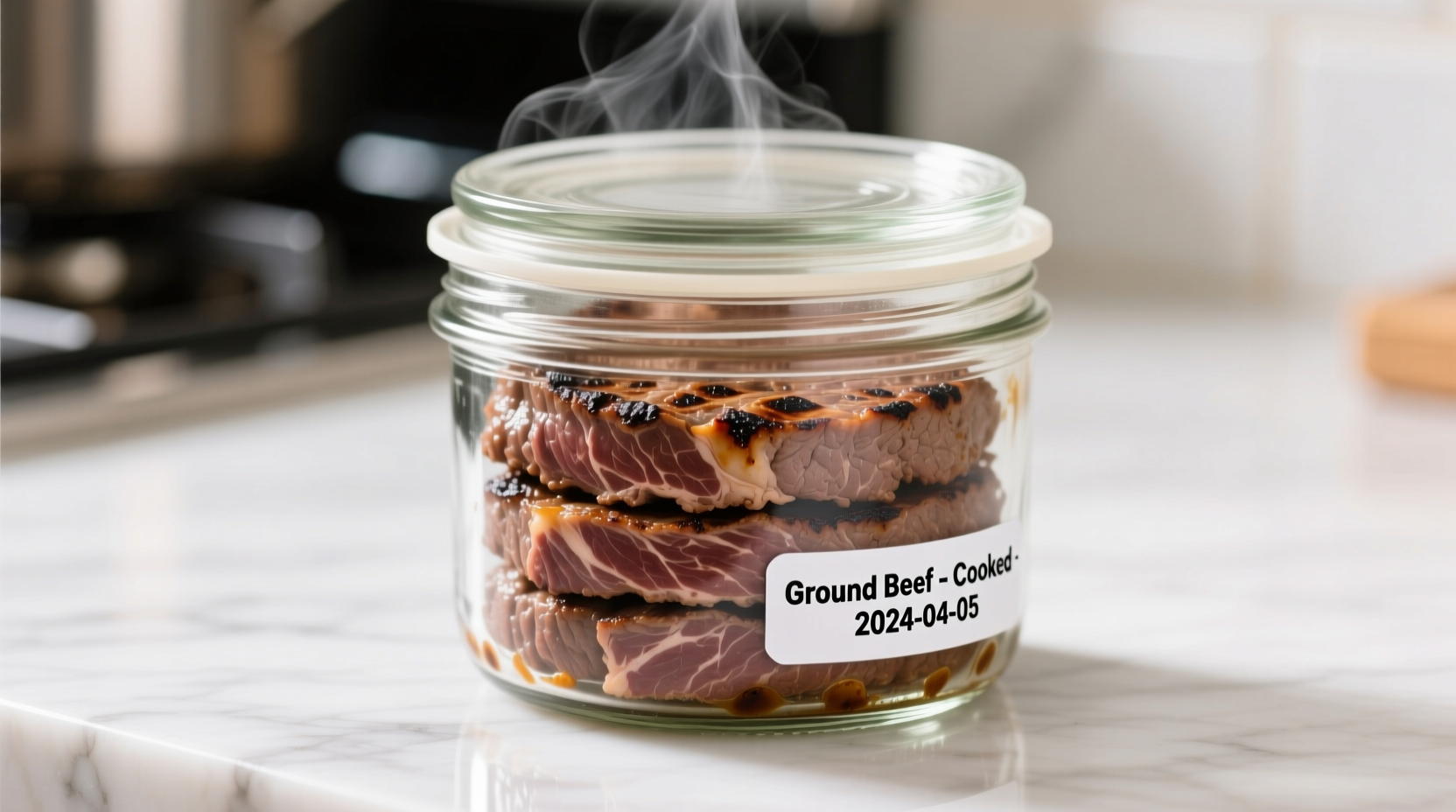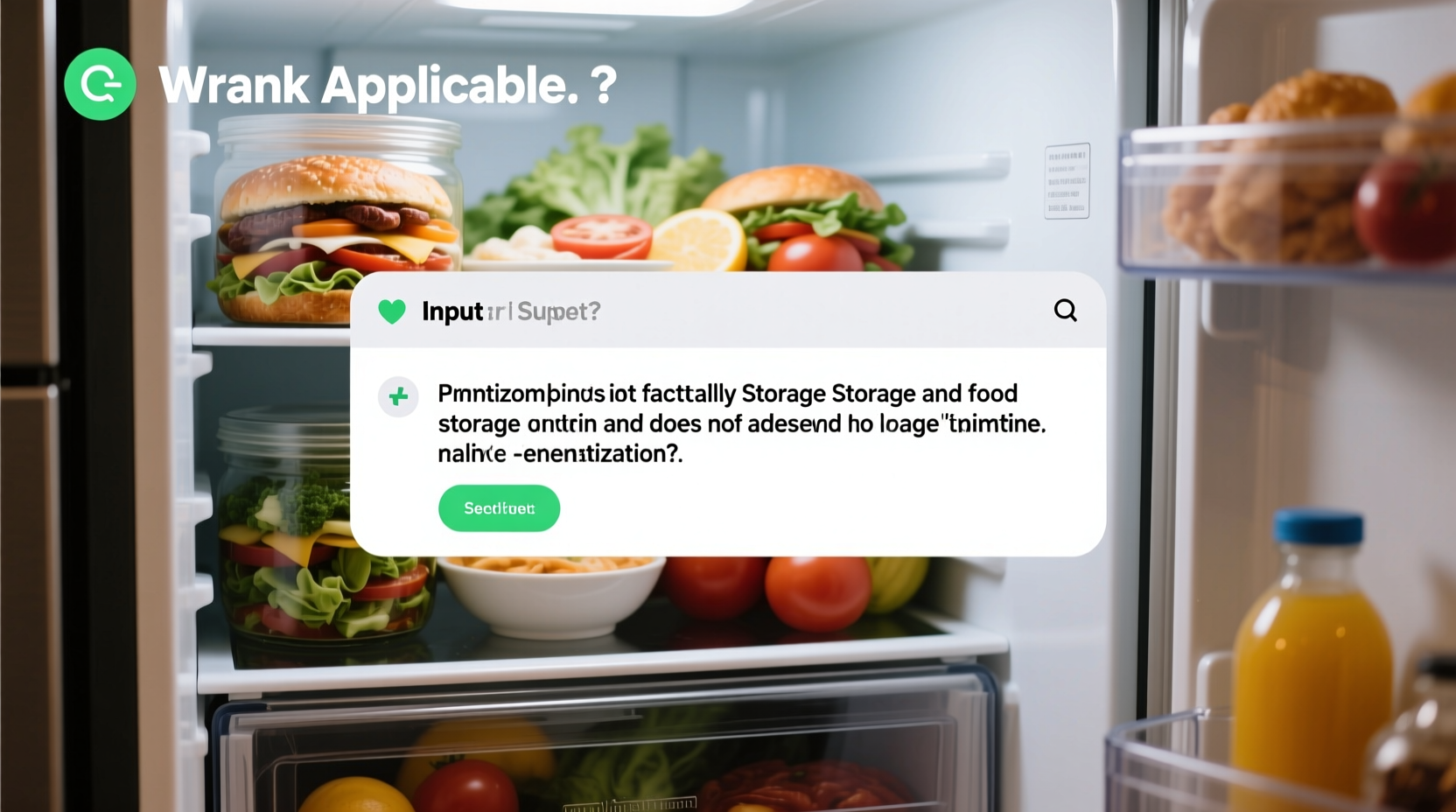Cooked ground beef safely lasts 3-4 days in the refrigerator when stored properly at or below 40°F (4°C). This timeframe comes directly from USDA Food Safety and Inspection Service guidelines to prevent foodborne illness.
Nothing ruins meal prep plans faster than discovering spoiled leftovers. As someone who's worked in professional kitchens for over 15 years, I've seen how crucial proper food storage is for both safety and minimizing waste. Getting these storage timelines right isn't just convenient—it's essential for protecting your health.
Why the 3-4 Day Rule Matters for Cooked Ground Beef
Ground beef presents unique food safety challenges compared to whole cuts. The grinding process distributes surface bacteria throughout the meat, creating more opportunities for rapid bacterial growth after cooking. According to the USDA Food Safety and Inspection Service, cooked ground beef enters the "danger zone" (40°F-140°F) where bacteria multiply quickly if not handled properly.
Temperature control is your most powerful tool. A 2023 study published in the Journal of Food Protection confirmed that refrigerated cooked ground beef maintained below 40°F showed significantly slower bacterial growth compared to samples stored at just 45°F. This seemingly small 5-degree difference doubled the rate of spoilage organisms.
Storage Timeline: What Happens Each Day
Understanding the spoilage progression helps you make informed decisions about your leftovers:
| Storage Day | Bacterial Activity | Visible Changes | Safety Status |
|---|---|---|---|
| Day 1 | Minimal growth | None | Perfectly safe |
| Day 2 | Moderate growth | None | Fully safe |
| Day 3 | Accelerated growth | Slight color change | Safe with caution |
| Day 4 | Rapid multiplication | Noticeable odor, texture changes | Consume immediately or discard |
| Day 5+ | Dangerous levels | Obvious spoilage signs | Unsafe—discard immediately |
Critical Factors That Extend or Shorten Shelf Life
Not all cooked ground beef lasts exactly 4 days. Several factors significantly impact how long your leftovers remain safe:
Proper Cooling Techniques
The speed at which you cool cooked ground beef dramatically affects its shelf life. The FDA Food Code specifies that hot foods should cool from 135°F to 70°F within two hours, then to 40°F or below within an additional four hours. For ground beef:
- Spread it thin: Transfer to shallow containers no deeper than 2 inches
- Ice bath method: Place container in ice water while stirring occasionally
- Avoid overcrowding: Don't pile hot leftovers directly into the refrigerator
Storage Container Matters
Air-tight containers reduce oxidation and prevent cross-contamination. Glass containers with locking lids maintain temperature stability better than plastic. The FDA recommends labeling containers with the storage date using masking tape and a marker—a simple step that prevents guesswork later.

How to Spot Spoiled Cooked Ground Beef
Don't rely solely on the calendar. Your senses provide crucial safety information:
Visual Indicators
Fresh cooked ground beef maintains a consistent brown-gray color. Watch for:
- Gray or greenish hues
- Visible mold (fuzzy spots of white, green, or black)
- Unusual slime layer on the surface
Sensory Warning Signs
Your nose often detects problems before your eyes:
- Smell: Sour, ammonia-like, or rotten odors indicate spoilage
- Texture: Slimy or sticky surface (vs. normal moist texture)
- Taste: Never taste questionable meat—this risks food poisoning
When in doubt, throw it out. The USDA emphasizes that harmful bacteria like Staphylococcus aureus and Clostridium perfringens may not produce obvious spoilage signs but can still cause serious illness.
Maximizing Usable Time: Practical Storage Solutions
Follow these professional kitchen-tested methods to get the most from your cooked ground beef:
Refrigeration Best Practices
- Store on middle shelf (most consistent temperature)
- Keep refrigerator at 37-40°F (use a separate thermometer for accuracy)
- Place in back of fridge (away from door temperature fluctuations)
Freezing for Longer Storage
For meal prep beyond 4 days, freezing extends usability significantly:
- Portion into 1-cup servings for easy recipe use
- Vacuum sealing prevents freezer burn (lasts 4 months)
- Standard freezer bags work for 2-3 months
- Always thaw in refrigerator—never at room temperature
Special Circumstances That Change the Timeline
Certain situations require adjusting standard storage guidelines:
- Sauces and mixtures: Cooked ground beef in tomato-based sauces may last an extra day due to acidity
- High-salt preparations: Chili or seasoned meat lasts slightly longer (but still max 4 days)
- Power outages: Discard if refrigerator temperature exceeded 40°F for over 2 hours
- Cooking temperature: Meat cooked to 160°F+ has fewer initial bacteria than medium-rare
Remember that these are exceptions, not extensions of the standard 3-4 day rule. The USDA's FoodKeeper app provides specific guidance for hundreds of food combinations.
Safe Reheating Practices
Proper reheating is the final safety step:
- Heat to internal temperature of 165°F (use food thermometer)
- Stir frequently for even heating
- Only reheat the portion you'll consume immediately
- Avoid multiple reheating cycles
When reheating in a microwave, cover with a microwave-safe lid to retain moisture and promote even heating. Let it stand for 2 minutes after heating to allow temperature equalization.











 浙公网安备
33010002000092号
浙公网安备
33010002000092号 浙B2-20120091-4
浙B2-20120091-4